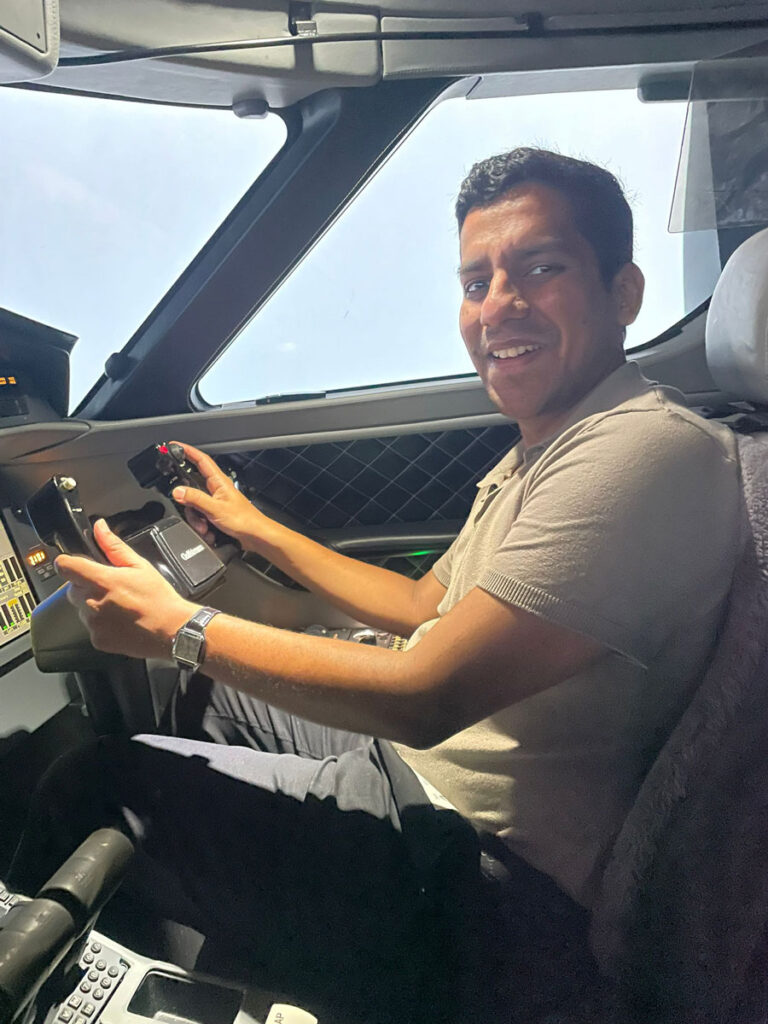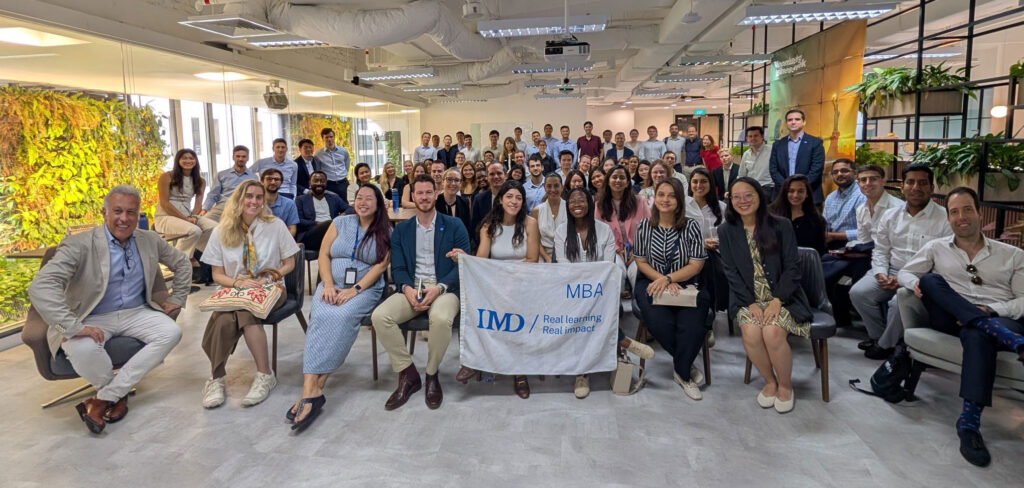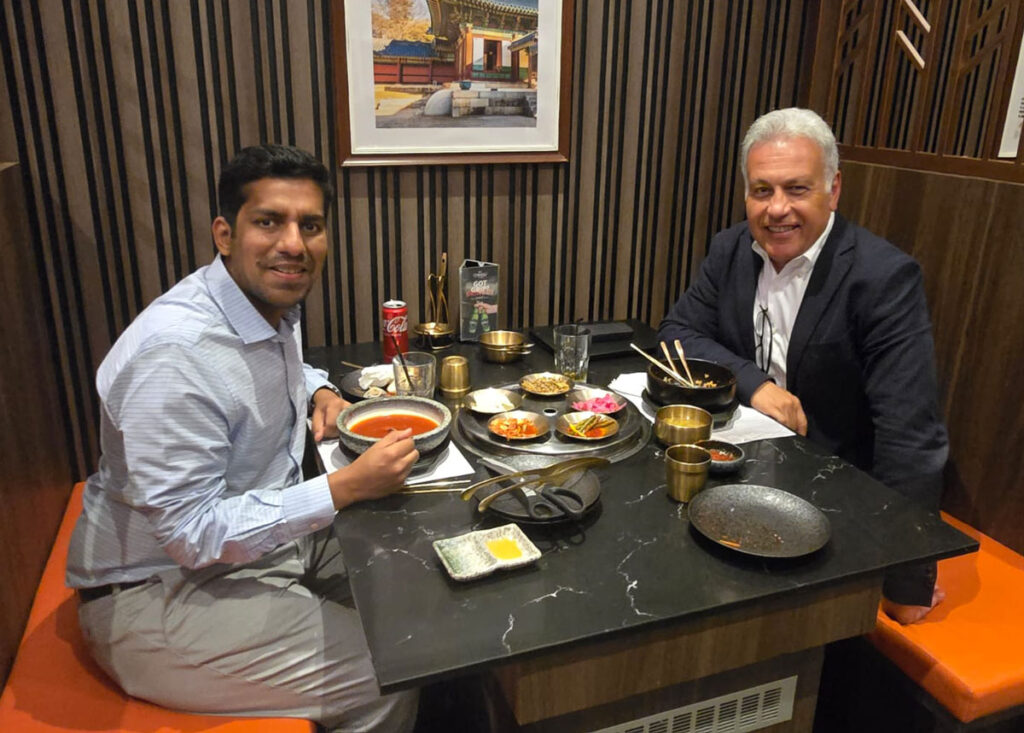The final week of the Future Lab in Singapore is not just a series of company visits. It is a structured immersion into how real-world institutions are shaping the future with technology, sustainability, and business model innovation.
The arc of discovery
The week was framed around visits to companies and institutions across the governmental, private, and innovation sectors. Each visit contributed a different layer to our understanding of policy and national strategy (EDB, BCA), science and innovation (A*STAR), digital infrastructure (Firmus Technologies), startup financing (Aspire, SC Ventures), global platforms (PayPal), aviation training (Singapore Airlines Flight Training Centre), and frontier technologies (Microsoft).

A*STAR: Bridging science and business
The Agency for Science, Technology and Research (A*STAR) showed how public R&D can fuel national competitiveness. What stood out for me was:
- CO₂-to-fuel catalysts: A*STAR is creating catalytic systems that convert carbon dioxide into usable fuels, a promising pathway for climate mitigation in hard-to-abate sectors.
- AI in chemical design: Data-driven platforms are accelerating molecule discovery and development for pharmaceuticals and advanced materials.
- Industry collaboration: Researchers co-develop IP with companies, especially SMEs, who may lack deep R&D.
- Biomedical leadership: Singapore is investing in end-to-end biomedical capabilities, from clinical trials to biologics manufacturing.
- Sustainability focus: A*STAR is actively supporting Singapore’s Net Zero strategy through science-backed innovations.

Firmus Technologies: Infrastructure for the digital economy
Firmus is enabling the invisible backbone behind today’s tech-led economy. Among the key insights were:
- Global data centers: Firmus operates hyperscale facilities across Asia and beyond, designed for resilience and scale.
- Liquid cooling and sustainability: Their latest innovations include water-based cooling systems to reduce power usage and environmental footprint.
- Sovereign cloud strategy: The company partners with governments to enable data residency and cyber-resilience.
- Hybrid infrastructure: Firmus supports both public cloud and private deployments, catering to regulated sectors.
- Edge computing: Preparing for the future of latency-sensitive applications such as autonomous transport and real-time analytics.

Microsoft: From software to systems thinking
Microsoft’s presence in Singapore is not just about software sales; it’s a regional engine for innovation. The highlights included:
- Industry-specific transformation: Microsoft partners with enterprises to co-develop AI and cloud-based solutions for retail, finance, healthcare, and manufacturing.
- Security-first AI: Their Copilot product layers enterprise-grade security and governance over OpenAI models to ensure safe deployment.
- Developer ecosystem: Microsoft’s GitHub acquisition and tooling support modern software teams with integrated platforms.
- Internal culture shift: A clear move from “know-it-all” to “learn-it-all,” as shared by the team. Continuous reinvention is core to staying relevant.
- Responsible AI: Every product integrates principles of fairness, transparency, and accountability.
Key takeaway: Technology is not enough. What matters is how it’s adopted responsibly, at scale, and with alignment to real-world problems.
One of the most fascinating experiences was visiting Microsoft’s cashier-less grocery concept. Cameras tracked every user, collecting behavioral data on how long someone viewed a product, which items they picked up and returned, and heatmaps of movement. There were no checkout counters and billing was automatic, demonstrating the convergence of AI, vision technology, data analytics, and retail. For retailers, this means real-time inventory management and insights into consumer behavior. For society, it can mean shorter queues, targeted discounts, and better supply chain efficiency.
This visit demonstrated that AI is not a buzzword; it’s a system that touches operations, marketing, customer experience, and economics.
Aspire: Building fintech for founders
Aspire is solving a clear pain point in how SMEs manage money across borders. They’re doing this by:
- Simplifying cross-border banking: Multi-currency wallets, global cards, and automated reconciliation tools.
- AI for compliance: Tools to flag suspicious transactions and speed up onboarding.
- Real-time dashboards: Helping founders make cash-flow decisions with real-time visibility.
- Integration ecosystem: Accounting, payroll, and invoicing tools are connected to a central platform.
- Community building: They mentor early-stage founders, creating network effects.

SC Ventures: Incubating innovation inside a bank
Standard Chartered’s SC Ventures is building and backing ventures in emerging areas. We saw:
- A structured approach: Every idea is tested against real customer pain points before scaling.
- Intrapreneurship culture: Employees can pitch ideas and get internal funding to build MVPs.
- Open architecture: SCV partners with fintechs to co-develop, rather than always building in-house.
- Portfolio strategy: Ventures cover digital assets, ESG, SME finance, and embedded banking.
- Balancing agility and governance: Startups work independently but report to a central venture board.
Key takeaway: Legacy institutions can innovate, but it requires new structures, incentives, and leadership.
BCA and EDB: National platforms for smart growth
The Building and Construction Authority (BCA) is using policy, regulation, and public procurement to drive innovation in the built environment. The Economic Development Board (EDB) anchors Singapore’s economic strategy. Key themes included:
- Green buildings: Regulation is driving adoption of sustainable materials, prefabrication, and carbon-tracking.
- Workforce upskilling: Digital twins and robotics are creating demand for a new generation of construction professionals.
- Strategic clusters: EDB builds ecosystems in semiconductors, biotech, and advanced manufacturing by anchoring MNCs and linking them with SMEs and universities.
- Incentives with accountability: Grants and tax breaks are tied to performance and local capability building.
- Long-term thinking: Singapore invests based on 10- to 20-year horizons, not quarterly cycles.
Key takeaway: Policy can shape industry structure if done with clarity and feedback loops.
Final reflection: Synthesis over sightseeing
This week wasn’t about ticking off names – it was about connecting systems.
I saw how governments invest in infrastructure and science (A*STAR, EDB), how platforms like Microsoft scale solutions, how startups (Aspire) and intrapreneurs (SCV) build for speed, and how enablers like Firmus create foundational capabilities. The lesson: each node matters, but value comes from orchestration.

Over lunch with Omar, we discussed how an MBA trains you not just to lead, but to think. This week reinforced that idea. Discovery is not about visiting; it’s about pattern recognition. It’s about listening deeply, asking the right questions, and translating observations into insights.
I come back from this week not with answers, but with deeper questions – and that, to me, is where real leadership begins.